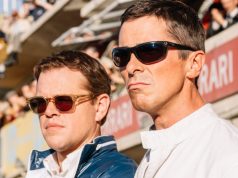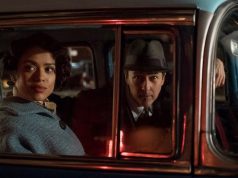“I’m Not There” is not a biography of Bob Dylan. It’s not as interested in what happened in his life as it is in what his life felt like. In fact, if you don’t already know at least the basics of Dylan’s early career, you’ll be left to flounder while the film ruminates.
This is the work of Todd Haynes, his first film since 2002’s masterpiece “Far from Heaven,” and certainly not the first time he has addressed the music world. Nor is it the first time he’s done it in an unorthodox manner. His 1987 short film “Superstar: The Karen Carpenter Story” used Barbie dolls instead of actors. “Velvet Goldmine” (1998) told a fictional but familiar story of the 1970s glam rock scene.
Here, he uses five actors and one actress to play Bob Dylan, each representing a different part of his life and career — and none of them is ever actually called “Bob Dylan.” (The reason for that is nothing as simple as legal logistics; Dylan gave Haynes his blessing on the film and let his recordings appear on the soundtrack.) Dylan was such a multi-faceted performer in the ’60s and ’70s that it makes a certain amount of sense to split him into separate compartments. The use of a different name for each section reflects the way people talk about him. Which Dylan do you prefer? The acoustic Dylan? The “freewheelin'” Dylan? The “Blonde-on-Blonde”-era Dylan?
Being considerably less of a Dylan scholar than I ought to be, I’m ill-equipped to comment on the film’s biographical accuracy. I can comment, however, on its usefulness as a movie, and there it’s fascinating, oblique, and experimental. Haynes’ style has never been to be weird just for weirdness’ sake, and he retains that gentle approach here. His poetic, often elliptical method of storytelling doesn’t always work, but at least it never feels like he’s forcing himself to be unusual.
A young boxcar-riding Dylan, calling himself Woody (after his idol Woody Guthrie), is played by a young black kid named Marcus Carl Franklin. Christian Bale plays the next incarnation, followed by Heath Ledger, Cate Blanchett, Richard Gere, and Ben Whishaw. The last appears only in what seems to be a deposition of some kind, responding to questions by addressing the camera and giving cryptic replies. The Gere version is in a small Western town trying to prevent land barons from taking over, apparently a reference to the Sam Peckinpah film “Pat Garrett & Billy the Kid,” in which Dylan played a role.
The bulk of the story deals with Blanchett’s section, and if you ever doubted her abilities as an actress, this performance should convince you of your error. It is surprisingly (even alarmingly) easy to accept her as Bob Dylan, not because she dresses and talks like him, but because she seems to embody his behavior during the last half of the 1960s. It’s the beginning of Dylan’s controversial electric phase, which Haynes depicts metaphorically by having Dylan and his band fire machine guns at the stunned audience. Dylan is called “Jude” in this section, too, a reference to the cries of “Judas!” that allegedly were heard on that fateful day.
The film jumps around chronologically and thematically, and the excellent cinematographer Edward Lachman (“Far from Heaven”) uses a different look for each part of Dylan. Blanchett’s segment is black-and-white, for example; so is Whishaw’s, only grainier and more homemade, while Ledger’s is more lush and movie-like.
I’m curious to watch the film again and see what new impressions it gives me. It’s not a challenge to enjoy it (assuming you know what you’re in for), but it is difficult to take it all in at once. Haynes has devoted such time and attention to the project that it’s rife with references, nuances, symbols, and metaphors — more than you can spot in one sitting, and far more than you can spot even in multiple sittings if you aren’t well-versed in Dylanology. Some people are Dylan scholars, but it ain’t me, babe. (See? That’s as good as I can do.)
B (2 hrs., 15 min.; )





